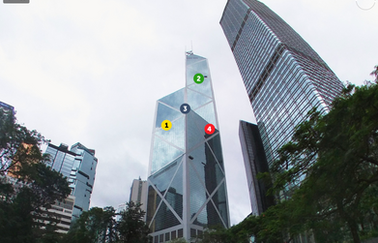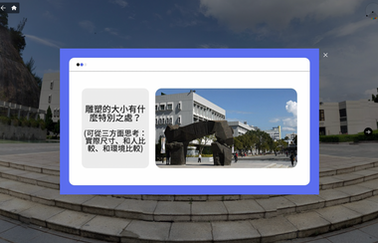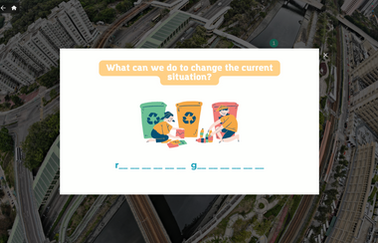
Virtual Reality (VR)
01
Integrated Curriculum: Nature Education
(統整大自然教育課程)
This e-learning package explores nature education with an integrated curriculum by using a 360° virtual tour of Kadoorie Farm & Botanic Garden. Students learn how to design learning activities of nature education for preschool children. The virtual tour can be further explored with the use of virtual reality goggles to enhance the realism of being in the learning environment.
02
Teachers and Teaching in Context Kindergarten Learning Environment: Design and Practice
The 360º photos with interactivities in this e-learning package provide an immersive experience of authentic kindergarten classroom settings. This helps students to visualize and understand the pedagogical reasons underpinning the design of learning corners.
03
Mathematics: Congruent triangles (S1)
This module adopted the VR function in ThingLink, in which students can use their VR goggles to visit various places in Hong Kong where architects have included congruent triangles in their designs. Four spots were chosen, including the Bank of China Tower, Hong Kong Arts Centre, Hong Kong Cultural Centre, and White Chapel at Discovery Bay. The use of VR can enhance students’ learning interest and incentive to learn mathematical concepts by attending a “Tour of Hong Kong” at home.
04
Visual Art module (S5)
This module applied VR technology to introduce 4 sculptures by 2 artists around Hong Kong. Students can appreciate the sculpture from different angles of a 360-degree photo and explore various learning activities after wearing the VR goggles. The booklet provided an activity-based learning experience that can enhance student's learning motivation and engagement in class. Teachers can bring students on a virtual field trip and guide students to appreciate artworks in the classroom.
05
English module (S2)
This module adopted a VR tour for students to explore the pollution problems we face in Hong Kong. Students can use their VR goggles to visit various places in Hong Kong to learn the vocabulary related to “light pollution”, “land pollution”, “air pollution” and “water pollution”. This designed module helps students to retain memory by breaking the vocabulary into syllables and visualizing the vocabulary.
06
Biology module (S5)
This module adopted VR to take students on a virtual field trip to learn about the living conditions of several types of lichens in Tai Mo Shan. The module included environmental data of 3 chosen spots, tutorials on using different measuring tools, and a simple botanical guide on different lichens commonly found in Hong Kong. The use of VR raises students' learning incentives and allows them to explore the “outdoor classroom” in their daily lives.
07
Geography module (S4)
This module applied VR to allow students to explore the characteristics and common landforms (upper course, middle course, and lower course) and the river management measures found in Lam Tsuen River, Tai Po. Students can click on the embedded learning tag to study river courses' characteristics and common landforms when they visit 6 selected spots with VR goggles. The designed module can enhance students' learning motivation by engaging with interactive 360 photos to understand the content while exploring the place virtually.















